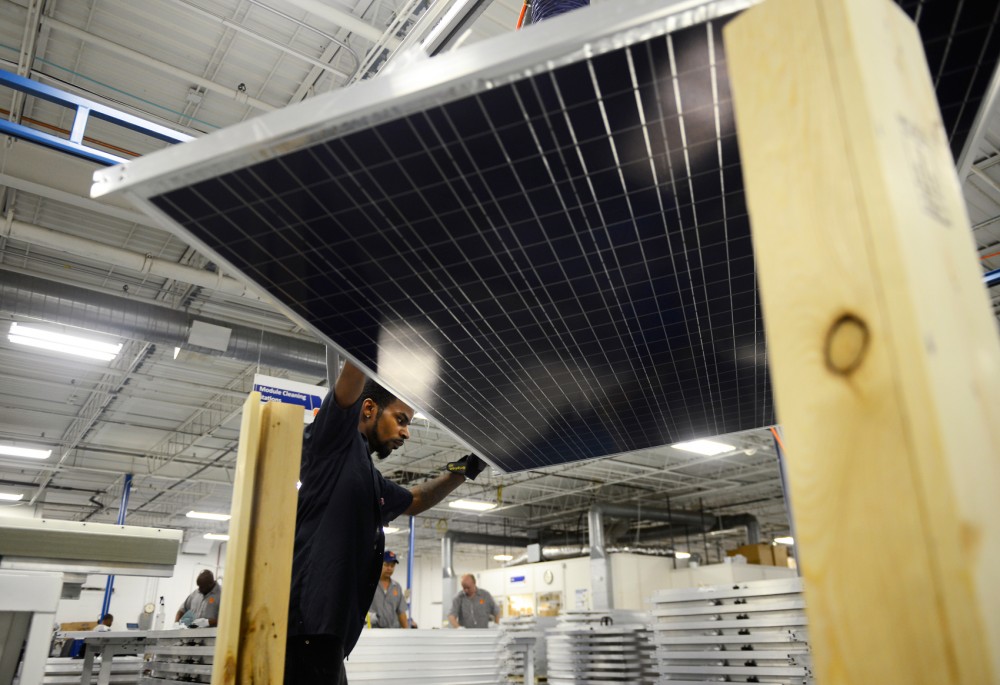The light rail that rumbles daily along the 11 miles of earthbound tracks connecting Minneapolis and St. Paul could soon be powered from above.
As part of a $2.7 million project to create more sustainable forms of energy for the train, locally manufactured solar panels will be installed along Metro Transit’s Green Line corridor on the rooftops of buildings on University Avenue.
The set of panels will contribute to a planned offset of about 17 percent of the light rail’s annual electrical usage. Currently, Metro Transit’s operations emit 140,000 tons of carbon dioxide annually, said Pat Jones, assistant director of facilities engineering.
“Transit is, intrinsically, a sustainable means of transportation, so, in that spirit, we want our operations to reflect that,” Jones said. “We want to be good stewards of the environment just like everyone else.”
Innovative Power Systems, a Minnesota-based solar energy equipment supplier, will begin installation in late February with plans to finish this summer, said Eric Pasi, the IPS vice president of business development.
The project, which is being financed through private investment and funds from Xcel Energy, was first proposed in the mid-2000s after concerns were raised that the area’s power grid would be negatively affected by the Green Line, Pasi said.
“Solar energy helps provide a predictable power source and energy cost going into the future,” Pasi said. “Our system should offset nearly 4 million pounds of [carbon dioxide] emissions per year.”
It will be solar panel manufacturer TenKsolar’s largest project to date, said marketing communications manager Corey Orehek.
“Solar panels are a perfect energy-collecting source,” he said. “They do not have any moving mechanisms, they’re steady, quiet, safe and reliable, and they can be placed in both rural and urban areas.”
Separately, Metro Transit has invested in multiple solar energy efforts like solar gardens and solar panels at sites including bus garages and light rail maintenance facilities, which are mainly used to power light rail trains, said assistant director of facilities engineering Pat Jones.
These projects are projected to save Metro Transit $4 million in the next few decades. So far, Metro Transit has saved about $22.5 million since 2009 through other
energy-saving initiatives.
“By the end of 2016, we think that 14 percent of our power will be replaced with solar power,” Jones said.








